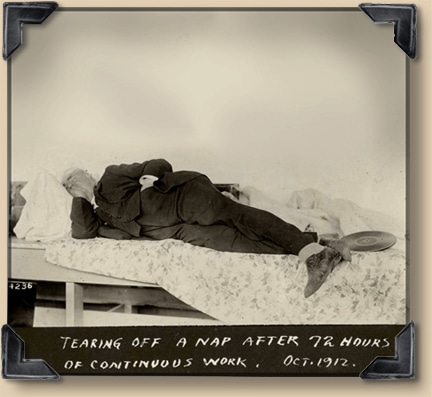How to Cure Tiredness?
A patient asked: I am having frequent attacks of flu and tiredness during this cold weather despite vaccination what are some tips to overcome this?
Winter time can be scary for moms and families alike. The kids get sick, dad gets sick, and even worse, mom gets sick. It can drag a family to near insanity. Nothing drains one’s energy than getting sick.
Every year multiple members of my staff at work get sick, as in hacking-lungs kind of sickness and the tiredness sets in their work.
I have written below about how my family and I try to combat the common cold, and this year is no different. I love Zinc lozenges and an thankful they have prevented me thus far from getting sick this year (aside from a true bout of laryngitis for 2 days which in a way was an unusual answer to a prayer).
https://drcremers.com/2014/03/natural-way-to-get-rid-of-flu-and-cold.html
I have no stock in this company below but wish I did.
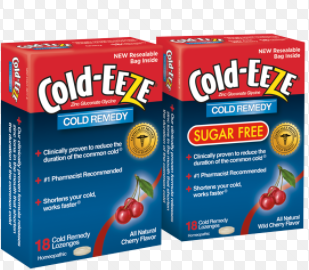
But here are other ways to fight and cure tiredness. My dad, who is a Cardiothoracic surgeon, would never (and still never does admit to being tired). Though we would always laugh at him when we would catch him sleeping, he did have some profound routines that kept him going hours into endless nights.
Sandra Lora Cremers, MD, FACS
The below is a modification of the the site: http://everydayroots.com/fatigue-remedies
1. Stay or Get active
There are now many free apps you can download to count your steps. A FITBIT is great, but not needed in many cases. Be sure you are walking at least 10,000 steps per day. There is a large body of research showing that exercise helps prevent Alzheimers in addition to hundreds of ailments.
Exercise decreases stress hormones and increases endorphins release which decreases fatigue and increases the sensation of being “happy and satisfied.”
You will need…
-A good pair of shoes (optional, unless you plan on walking into a store.)
Directions
It is of the utmost importance that you keep your exercise regular to boost your energy, particularly long-term. Don’t set the bar too high in the beginning if you think you’ll easily get discouraged attempting a 4 mile run. Just lace up, slip on, or leave off your shoes and get outside. Take your dog for a walk, go for a casual stroll-anything-even a little exercise is better than none. If the weather isn’t cooperating, turn on some tunes and come up with an indoor workout routine. As you get into the habit, slowly increase your level of activity.
I have never tried this one and will have to look up the Carb count on this one, but the site recommended it. Did not find any studies to prove its effect but no risks seen either.
2. Sip Some Potato Water
While a brimming glass of fresh potato water may not sound like the first thing you’d want to relax on a hot summer day with, it’s actually a great home remedy for fatigue. Soaking slices of potato in water makes a potassium rich drink that can help you feel less tired and sluggish, as it replenishes a mineral many people have trouble getting enough of. Like magnesium, the body does not produce potassium-we have to consume it from outside sources. Because our diets these days tend to lean towards being nutrient deficient, it’s no wonder we find ourselves lacking in the potassium department.
Potassium doesn’t give you a direct jolt of energy, per say, but along with magnesium (as well as chloride and calcium) it is an electrolyte that is vital for the proper functioning of our cells and the release of energy and the conduction of electricity. Without enough of it, our muscles wouldn’t move properly and our nerve impulses wouldn’t fire right. By ensuring you have healthy levels of potassium, you can get an edge on feeling dull and tired all the time.
You will need…
-1 unpeeled potato
-8 ounces of fresh water
Directions
Slice up the potato (there’s no need to peel it- I realize I show them peeled in the photo but I went on auto pilot) and add to a glass of water. Allow it to steep overnight in the fridge, and drink first thing in the morning.
3. Boost Red-Blood Cells
Iron is important. Without it, our bodies cannot produce enough red blood cells. Red blood cells contain hemoglobin, the iron rich protein that carries oxygen throughout our body. Many people think of oxygen’s use ending when it enters our lungs, but it must travel throughout our bodies and get delivered to all of our cells and organs for them to function. As you can imagine, a lack of oxygen would lead to a decrease in the bodies functioning, which will result in fatigue. This is called iron-deficiency anemia. To combat this, make a tea with nettle leaf (fresh is preferred but dry works as well.) Nettle is rich in iron, as well as vitamin C. The latter part is relevant because vitamin C has been shown to help increase the absorption of non-heme iron (iron found in plants vs. fish, meat, etc.) which isn’t always absorbed as easily as heme iron. Adding in some dandelion boosts the iron content of this tea even more but beware-it is bitter, so I recommend plenty of honey!
You will need…
-1 cup each fresh dandelion & nettle OR 2 teaspoons each dried dandelion and nettle
-1 cup of freshly boiled water
-Your favorite mug
-Honey!
Directions
Bring water to a boil and place your herbs in a mug. Pour the boiling water over them and cover, steeping for 10 minutes. Remove the herbs, add plenty of honey to taste, and drink 2 times daily.
4. Get Some Ginseng
Possibly the “most famous of all Chinese herbs”-that’s a hefty title, considering Chinese herbal medicine dates back hundreds of thousands of years and is full of staple herbs and natural ingredients. But Ginseng has a special place in history, although it’s many varieties can make utilizing it a little confusing. Ginseng refers to any one of 11 species of slow-growing perennials in the genus Panax. It is found in North America as well as in Eastern Asia. It is often referred to as an “adaptogenic” herb, which means it helps the body adjust to stress-whether that stress is caused by being in an extreme heat or cold, hunger, or exhaustion/fatigue (just think adaptogens = adapt to stress.) They are thought to help the body in coping with stress by improving the health of the adrenal system, which is the body’s command center when it comes to your hormonal response to stress. Cortisol, the “stress” hormone, can effect if you sleep through the night, and dictate if you can fall back asleep, as it suppresses melatonin, which we need to have a regular sleep/awake cycle. Too much cortisol, and you could be left feeling fatigued and exhausted because your sleep is disrupted. In the morning our cortisol levels are at their peak, and then gradually fall throughout the day, but if they remain too high, this diurnal rhythm will get thrown off, as will the precious sleep that you need to rejuvenate. Having a bit of ginseng may help regulate your cortisol, and help you get the rest you need to function properly.
You will need…
-1 tablespoon of dried ginseng root OR 1 inch of fresh ginseng root
-1 cup of fresh water
-Honey/lemon to taste
Directions
Slice up 1 inch of ginseng root into small pieces, or place 1 tablespoon of dried ginseng in a tea ball. Cover with hot water and steep, covered, for 10 minutes. Stir in honey and or lemon to taste and replace your morning coffee. Ginseng must be drank daily to have any effect.
5. Perk-Up With Citrus
I adore citrus in pretty much all its forms. From lemon juice to orange juice and everything in between, it never ceases to come in handy for home remedies, and it’s refreshing as all get up. In the case of fatigue, start off your day with a glass of lemon water. The smell of a freshly sliced lemon alone will perk you up instantly, and the hydration will set your day up for success. Lemon water helps a number of conditions-such as preventing constipation-but there’s something about it that just revitalizes a tired body. If you find yourself dragging in the middle of the day, treat yourself to another glass. I couldn’t list off the chemical and molecular components of lemon water that fight fatigue, I can just say anecdotally that I (among many others) find it almost wondrous in regards to keeping up on energy.
Directions
Squeeze the half of a freshly sliced lemon/lime into a full glass of water. If it’s winter, make it warm water-if it’s summer, enjoy it chilled! Drink the whole thing, and repeat twice daily (with a mid-day boost if needed.)
6. Make Your Own Energy Drink
Don’t turn to store-bought “energy drinks.” They are, I think, one of the most ridiculous marketing schemes to take over in recent years. You’re paying an absurd amount for something that is doing you more harm than good-and it’s really not going to wake you up in the long run. It will, in all reality, probably make things worse. So make your own instead-they’re delicious, satisfying, good for you, and will give you the wonderful long lasting energy you’re looking for.
7. Formal Stretching, Exercise, Yoga.
Yoga is interesting. The stretching and exercise part are wonderful. The part that becomes a religion, is not for me.
You will need…
-A bit of self-discipline
Directions
Forget the trendy part and just try it. There are specific poses that help energize you, such as tree pose, downward dog, and cobra. Some require focus and attentiveness, others are more to strengthen muscles and increase flexibility, but all can help fight fatigue.
8. Love Your Licorice
Licorice root is an herb that I tend to go to when it comes to something like a sore throat, but one of its main constituents (glycyrrhizin) can actually help with fatigue as well, especially fatigue that is associated with less-than-optimal adrenal functioning. Like ginseng, it can help regulate cortisol levels. It actually helps boost cortisol, which may seem counter intuitive (read the ginseng remedy for a briefing on what cortisol does), however if you aren’t producing enough, your body can sometimes over-produce in an attempt to compensate. This can leave you feeling tired during the day, but laying wide awake and frustrated at night. Cortisol requires a balance-too much and you’ll be unable to sleep, too little and your rest will also be disrupted.
You will need…
-1 tablespoon of dried licorice root
-1 cup of water
-Honey/lemon to taste
Directions
Steep 1 tablespoon of dried licorice root in boiling water, covered, for 10 minutes. Strain, add honey/lemon to taste, and drink first thing in the morning.
9. More Magnesium
I mention magnesium a lot, but it is an important mineral that we really truly suffer a lack of these days. The body does not produce magnesium on its own-it’s up to us (and our diets) to provide this essential nutrient. The problem is, many diets these days suffer from a lack of good wholesome food. It is a cofactor in 300 plus enzyme systems that regulate a wide variety of biochemical reactions. Everything from muscle and nerve function, protein synthesis, and energy production require magnesium. The best way to get the proper amount is to eat the right foods rather than take a supplement. Dark leafy greens, nuts, fish, whole grains, and bananas are all rich in magnesium.
You will need…
-Magnesium rich foods OR a high quality supplement
Directions
Include a healthy dosage of magnesium rich foods to your everyday diet, or take a high quality supplement. Adults should take no more than 350 mg/day in the form of supplements-while getting more in terms of diet isn’t necessarily harmful, it’s easier to take too much in the form of concentrated supplements.
10. Eat (and drink) good stuff.
What is food to us? Why does it matter? It is literally our energy, it’s our fuel. We tend to overlook its importance in today’s society. It’s right at our fingertips all the time, and the old adage “you are what you eat” has faded into the background. But if we skimp on meals or stuff our diets with sugary drinks and greasy, fatty, food, we won’t run right, or at all. You’ll find yourself feeling worn out and fatigued.
When we eat, our bodies break down the carbohydrates (sugars and starches) which are then broken down again into glucose (blood sugar) and absorbed into the blood stream. Put simply, glucose is the energy needed for all systems to go, from our brains to our leg muscles to our heart, and everything in between. Now all carbs aren’t good for you-they must be complex carbohydrates. Complex carbohydrates are made of long, complex (hence the name), chains of sugar molecules. This is turned into glucose, and gives us energy. Simple carbohydrates, such as sugar from cakes and cookies, artificial syrup, candy, etc. provide essentially zero value to your body, contribute to weight gain (among other things) and will make you feel not so hot. These simple carbs have only 1 or 2 sugars and are burned up quickly. You might get a temporary boost in energy as your glucose spikes, but you’ll crash pretty fast. Complex carbs will give you a steady, even, release of energy. If you’re eating an unhealthy diet, chances are you’re eating bad carbs, and that means you aren’t turning a whole lot of your food into energy-which is likely why you’re fatigued.
Keep in mind the following fatigue tips and questions:
Content ratio: The higher the sugar and the lower the fiber the worse the carbohydrate. Use that as a general guideline to indicate which carbs are good or bad.
Know the good from the bad: The word “carbohydrate” has been tossed around a lot, first we hear they are good, then all of a sudden they’re bad for you. The answer is they are both, but we can easily separate the good from the bad. You need the good, so educate yourself and don’t steer clear of carbs altogether or you’ll get drained.
Fiber, fiber, fiber and more fiber: Foods high in fiber are digested slower than foods with very little fiber, avoiding spikes in blood sugar levels. Examples are whole grains, fruits, vegetables, and beans.
Is it refined? Is it processed?: Foods like white bread and white rice are stripped of fiber and full of simple carbs. Avoid along with the obvious things like fast food, sugary goodies, soda, etc.
11. If you take NAPS, keep them short:)
Many effective people through history were nappers, like Einstein, Churchill (see list below)! Naps are beautiful. But do not take them for too long or you will be more tired when you wake up. Limit them to 20-30min per day. For those of us that do not drink any caffeine, naps are lovely.
You will need…
-A cozy place to nap
Directions
The brain enters slow wave sleep after roughly 20-30 minutes, so limit your time to a “power nap.” Unless you’re extremely sleep deprived, a 20 minute or so nap should leave you feeling refreshed and awake, not groggy, fatigued, and tempted to go back to sleep. Set aside a time not too close to bed time to treat yourself to an energy boost.
12. Special Spinach
As cliché as it may sound, Popeye really was onto something with spinach and the energy/strength it gives you. Rich in iron, it can help boost red blood cell count, therefore providing you with more energy and fighting anemia. It is also full of magnesium-1 cup of spinach contains 39% of the recommended daily intake for magnesium. Early research shows that it may even improve muscle function during a workout.
You will need…
-At least 1 cup of spinach
Directions
Enjoy at least 1 cup of spinach daily, raw or cooked.
Fatigue is a tricky thing because you have to not only figure out what’s causing it, but also be dedicated to overcoming it. This is, of course, made all the more difficult by the fact that you’re exhausted all the time. One of my favorite sayings is “seeing the obstacle is one thing, getting around it is another.” Remember there are two halves to the battle, and the latter-actually getting around said obstacle-is usually the hardest. Stick with it!
http://www.artofmanliness.com/2011/03/14/the-napping-habits-of-8-famous-men/
A few weeks ago, we covered the myriad of
amazing benefits provided by the too-oft maligned nap. If you’re still not convinced of the benefits of napping and are in need of some additional inspiration, or, you’re simply curious about how some of history’s most famous nappers, today we provide a look at the napping habits of 8 eminent men.
Winston Churchill
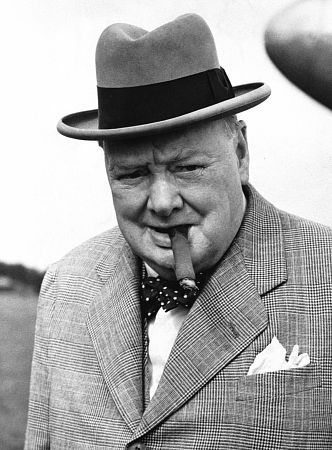
“Nature has not intended mankind to work from eight in the morning until midnight without that refreshment of blessed oblivion which, even if it only lasts twenty minutes, is sufficient to renew all the vital forces.”
Churchill’s afternoon nap was a non-negotiable part of his relaxed approach to his daily routine. Churchill would start his day at 8 am by eating breakfast, answering letters, and dictating to his secretaries, all of which was conducted while still in bed. This bout of work was followed by a bath, a long lunch, and plenty of sipping on watered-down whisky. After lunch it was time to paint or play cards with his wife, Clementine. Then it was nap time. Churchill would take off his clothes and climb into bed for up to two hours of solid napping. At 6:30 he would rise, take another bath, and enjoy a long dinner. He finally got down to business at 11 pm and would work for several hours before going to bed and repeating the cycle over again. An unapologetic night owl, Churchill felt that his naps helped him get twice as much done each day (which makes one wonder just how little he would have worked without it!)
Nap were so sacrosanct to Churchill that he kept a bed in the Houses of Parliament and believed that napping was the key to his success in leading the country through the Battle of Britain.
Lyndon B. Johnson
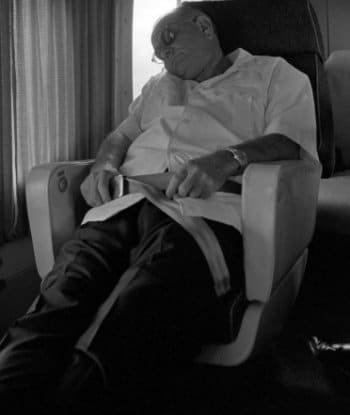
LBJ catches some winks aboard Air Force One.
When Lyndon B. Johnson assumed the presidency, he set out to pass an extremely ambitious legislative agenda, including a war on poverty, the protection of civil rights, the commencement of public works, and the cutting of taxes. To accomplish his goals, LBJ was prepared to work like a dog and to this end he adopted a “two-shift day.” He woke up at 6:30 or 7, read the newspapers, and then headed to the White House where he worked until 2 pm. He would then exercise, taking a swim or brisk walk, before donning his pajamas and settling in for a 30 minute nap. He awoke up at 4, changed into clean clothes and began his “second shift” of the day, sometimes working until 1 or 2 in the morning.
Napoleon Bonaparte
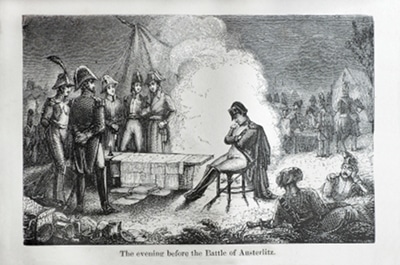
During campaigns, Napoleon was a whirlwind of energy, galloping from place to place, poring over maps, and pondering strategy. He would go days without changing clothes or lying down for a full night’s sleep. But he had the ability, as many great leaders do it seems, of being able fall asleep at the drop of a hat. This ability was likely a product of his supreme confidence. Napoleon could sleep like a baby right before battle and even when cannons were booming nearby. As they have been proven to do by modern science, Napoleon’s naps staved off the fatigue which stalks those who skip a whole night’s sleep. Then, when the storm of battle was over, the general would sleep for an eighteen hour stretch.
John F. Kennedy
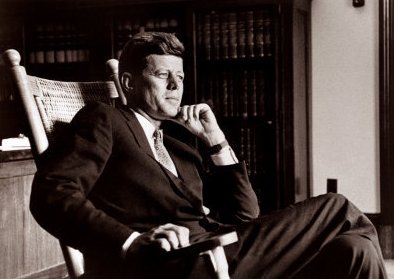
After a mid-morning stint of swimming and exercise, John F. Kennedy would eat his lunch in bed and then settle down for a nap. He would have his valet draw the drapes and ask not to be disturbed unless it was a true emergency. He would then quickly fall asleep for a 1-2 hour nap. Jackie would always join him no matter what she was doing when her husband’s nap commenced, leaving an assistant to entertain her guests. Head of the household staff, JB West, recalled that “during those hours the Kennedy doors were closed. No telephone calls were allowed, no folders sent up, no interruptions from the staff. Nobody went upstairs, for any reason.”
After awakening from his nap, Kennedy would take his second hot bath of the day, resume meetings in the Oval Office at 3:30 pm, knock off around 7:30 or 8:00, take another swim, and change his clothes for dinner. Kennedy wore at least three different sets of clothing every single day he was President.
Jackie was the one who later encouraged LBJ to take naps, telling him, “It changed Jack’s whole life.”
Thomas Edison
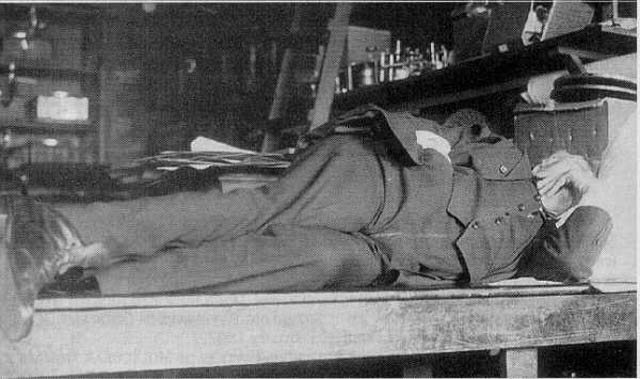
Thomas Edison was something of a self-hating napper. He liked to boast about how hard he worked, how he slept only three or four hours a night, and how he would sometimes work for 72 hours straight. But in truth the key to his spectacular productivity was something he was loathe to mention and hid from others: daily napping. Once when
his friend Henry Ford paid a visit to his lab, Edison’s assistant stopped him from going into the inventor’s office because Edison was snoozing. Ford said, “But I thought Edison didn’t sleep very much.” To which the assistant answered, “He doesn’t sleep very much at all, he just naps a lot.”
Edison said he could sleep “as sound as a bug in a barrel of morphine” and he often got in a couple of 3 hour naps during the day. One of his associates said that Edison’s “genius for sleep equaled his genius for invention. He could go to sleep anywhere, anytime, on anything.” Indeed, he would often curl up for his naps on a workbench or in a closet.
Stonewall Jackson
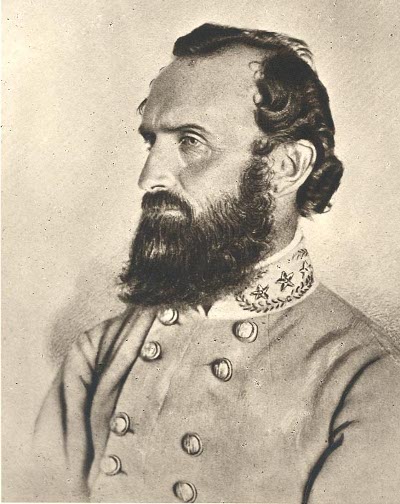
Jackson, a general cut from the same cloth as Napoleon, could nap in any place—by fences, under trees, on porches–even in the stress of war. He liked longer naps but also had the reputation for taking quick, 5 minute siestas to rest his eyes. A couple of anecdotes of the General’s napping habits from
A Thesaurus of Anecdotes of and Incidents in the Life of Lieut-General Thomas Jonathan Jackson by Elihu Rile:
“During the fury of the struggle at Malvern Hill, Jackson was roused with great difficulty from a heavy slumber, and informed of the situation. Those around him were apprehensive of the result, for attack after attack on our part had been repulsed with severe loss. Jackson, upon recovering his consciousness, merely said, ‘McClellan is only fighting to get away. In the morning, he will be gone.’ He immediately resumed his nap, and Dr. Dabney adds that, upon hearing his opinion, he at once followed his example. When the morning light dawned upon this scene of blood, every trace of the enemy had disappeared.” –Dr. B. L. Dabney
“Talking about Jackson’s propensity to sleep, I remember after the battles of the Seven Days’ Fight around Richmond one Sunday we went to Dr. Hoge’s church. He went to sleep soon after the service began and slept through the greater part of it. A man who can go to sleep under Dr. Hoge’s preaching, can go to sleep anywhere on the face of this earth. When the service was over the people climbed over the backs of the pews to get near him, and the aisles became crowded and General Jackson embarrassed. Presently he turned to me and said: ‘Doctor, didn’t you say the horses were ready?’ and I said, ‘Yes, sir,’ and we bolted out of church.
Many a night I have kept him on his horse by holding to his coattail. He always promised to do as much for me when he had finished his nap. He meant to do it, I am sure, but my turn never came.” — Dr. Hunter McGuire
Ronald Reagan
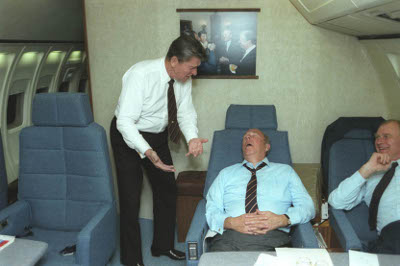
Reagan, preaching to the converted.
Ronald Reagan was a controversial napper. Critics tried to use his rumored propensity for napping as proof of a lackadaisical approach to the presidency and a reminder of his advanced age. Nancy always denied that her husband was a napper. But his diaries show that he at least occasionally indulged in the nap, noting in reference to his daily schedule that “afternoon is still nap time” and often taking one to recharge before donning a tux and attending a formal nighttime event. He also enjoyed turkey hunts for the opportunity they provided for naps. For his part, Reagan, as he did with many things, had a sense of humor about the criticism over his napping. When he was leaving office, he joked that his cabinet chair should be inscribed with, “Ronald Reagan Slept Here.”
Salvador Dali
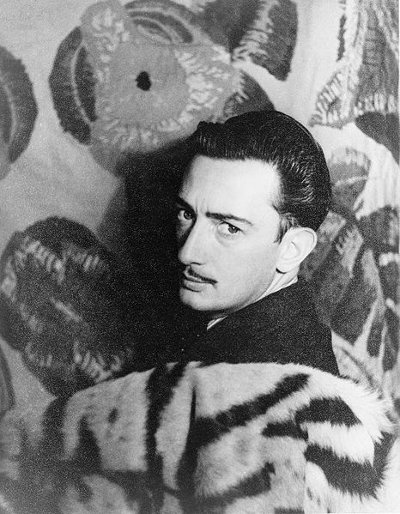
Eccentric artist Salvador Dali believed that one of the secrets to becoming a great painter was what he called “slumber with a key.” “Slumber with a key” was an afternoon siesta designed to last no longer than
a second. To accomplish this micro nap, Dali recommended sitting in a chair with a heavy metal key pressed between the thumb and forefinger of the left hand. A plate would be placed upside down on the floor underneath the hand with the key. The moment Dali fell asleep, the key would slip from his finger, clang the plate, and awaken him. Dali believed this tiny nap “revivified” an artist’s whole “physical and physic being.”
Dali said that he had learned the “slumber with a key” trick from the Capuchin monks and that other artists he knew also used it. Albert Einstein “napped” this way as well, as have other inventors and thinkers who believed this nap inspired their ideas and creativity. These men were unknowingly taking advantage of what scientists today call the “hypnogogic” nap, when the mind, before it reaches Stage 2 sleep, unlocks free flowing creative thoughts. It’s a topic interesting enough to warrant its own post



